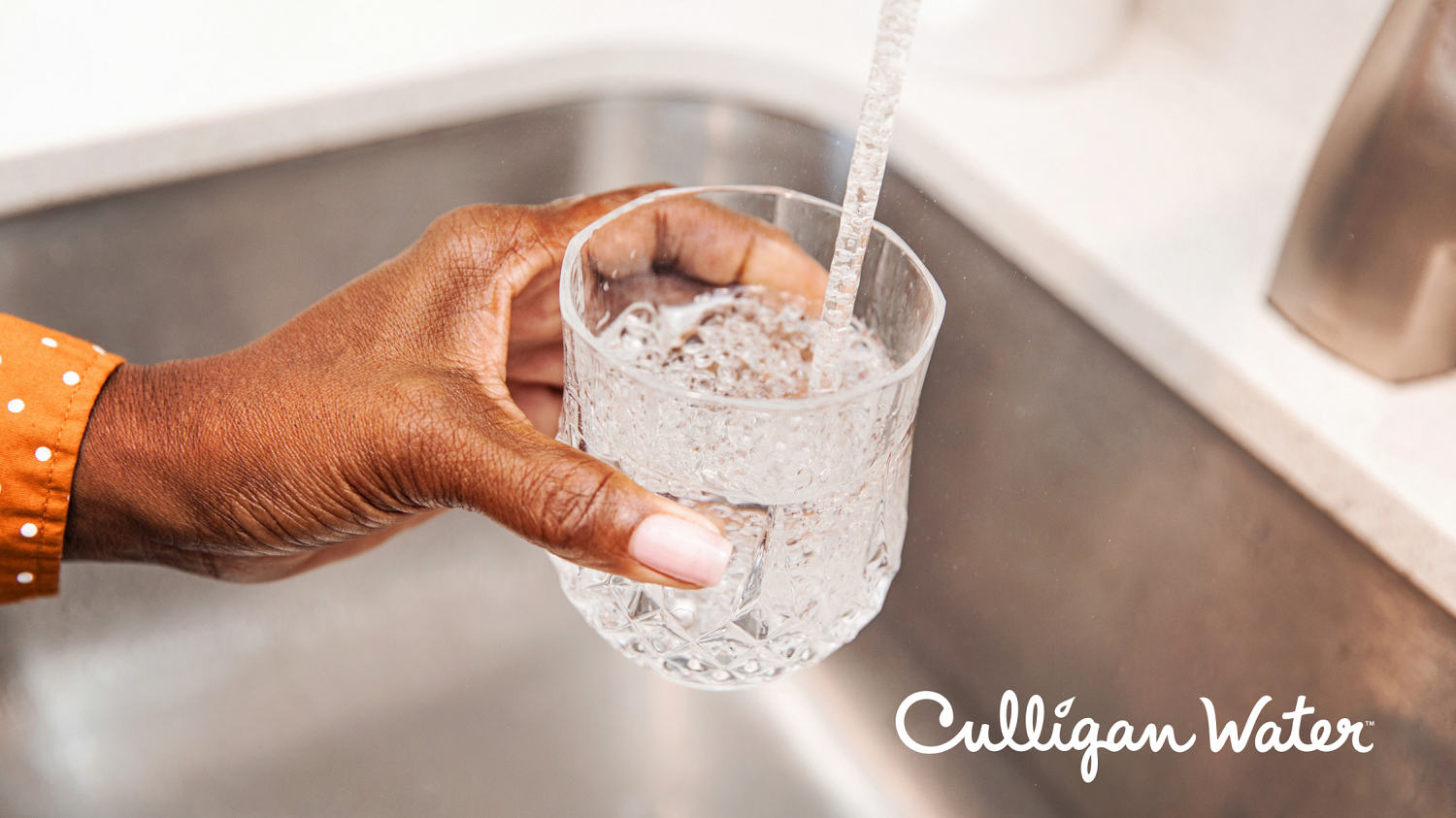Drinking Water Quality: What You Need to Know
Get answers to common questions about America's public and private water systems.
Posted in
Bottle-Free Coolers,
Bottled Water,
Drinking Water,
Drinking Water System,
Total Home System,
Water Filtration System

Don't wonder what's in your water - your local Culligan water expert can tell you! Claim your free water test today.
How often do you use water from a faucet?
Every day, Americans use tap water in many different ways. Such as for bathing, cooking, washing clothes and drinking. We rely on clean water so much that we tend to take it for granted.
The US has some of the safest drinking water in the world. But, it's not perfect. And it's certainly not always safe. Hence, treating water to reduce contaminants is critical to making sure that water is safe to drink. Otherwise, you might ingest harmful germs or chemicals.
That's why it's important to be proactive about learning where your water comes from and who regulates it. And what you can do to ensure it's up to par.
So let's dive in.
Keeping Drinking Water Safe and Healthy
First we'll learn more about what it takes to keep our water supply clean. Starting with the basics.
How is drinking water regulated?
In 1974, the Safe Drinking Water Act was passed. Consequently, this put the Environmental Protection Agency (EPA) in charge of regulating America's drinking water quality.
By EPA-ordinance, all US public water suppliers are required to uphold certain levels of water quality. Suppliers must also provide annual consumer confidence reports detailing the levels of certain contaminants.
Still, violations remain widespread. And some water systems have contaminants that the EPA does not look out for. Private water systems (residential wells) are not federally regulated at all. So it's up to consumers to test their supply regularly.
What causes water contamination?
Factors contributing to contamination include minerals found naturally in the ground, chemicals from factories and nitrates or fecal matter from farming. Additionally, outdated pipes leave millions of people vulnerable to lead contamination and bacterial growth.
Here are some fast facts from the National Resources Defense Council:
- Within the last five years, nearly 77 million Americans got drinking water from systems that violated federal protections.
- Moreover, millions of other water suppliers fail to test water properly or don't report test results to health authorities or consumers. Thus, potentially sweeping additional issues under the rug.
- About 10% of Americans rely on water from private wells. Most of which are under-tested.
All Americans should test their water at least once per year to be certain their water does not contain harmful contaminants.
Which water contaminants are harmful to your health?
Many water contaminants are not observable. Some, like arsenic, cause problems you can't see, taste or smell, making regular testing incredibly important.
These are some of the more serious contaminants.
Lead: This heavy metal leaches from old pipes and plumbing fixtures. It can cause neurological and behavioral problems in children. Plus adverse health effects in adults.
Arsenic: Found naturally in rocks and soil, arsenic can dissolve into ground water and increase your risk of cancer.
Atrazine: This endocrine-disrupting chemical is one of the most commonly detected pesticides in US waters. Numerous studies link atrazine to increased risk of prostate cancer in men, increased risk of breast cancer in women and developmental defects in fetuses.
Chlorine treatment by-products: Chemicals used in drinking water's disinfection process, such as trihalomethanes and haloacetic acids, may cause cancer and reproductive problems if present in high quantities.
Nitrates: Nitrates in high quantities can be harmful to pregnant women and infants. In rare cases, exposed infants can develop blue baby syndrome, a potentially fatal illness that prevents the blood from carrying oxygen.
Contaminants continued
Radioactive contaminants: Radioactive material can enter drinking supplies through leaks or improper waste storage. Exposure can cause cancer or kidney failure.
Pathogens: Bacteria, viruses and parasites that cause illness can find their way into water supplies. Symptoms include diarrhea, vomiting, cramps, nausea, headaches, fever, fatigue. And even death.
Pharmaceuticals: Chemicals from pharmaceuticals and personal care products enter our water supply via human secretion. Or when they are flushed down the toilet. Whether they are present in sufficient levels to affect human health remains a topic of serious concern.
Perchlorate: This widespread toxic chemical is used in rocket fuel, explosives and road flares. And it can interfere with thyroid hormone production. There is no federal standard for its presence in drinking water.
Vinyl chloride: Used to make PVC plastic products, this cancer-causing contaminant can leach from older piping.
Know that the presence of one or more of these contaminants in your water does not indicate an automatic health risk. But, they are not to be taken lightly.
What should you do if you are concerned about drinking water quality?
In conclusion, you do not want to neglect your drinking water. If you are concerned about your water quality, the first step is to contact your local Culligan expert to get it tested.
After completing a water test, your local expert will help you understand what contaminants are present in your water. And whether they pose a threat to your health.
If you decide to treat your water, Culligan offers customized solutions to fit your lifestyle, goals and budget. Options include a whole home filtration system, reverse osmosis drinking water system, bottled water, bottle-free water dispensers and more.
Whatever concerns you have about your drinking water, Culligan has the solutions to help you fill your glass with confidence.
Schedule your free water test today!
